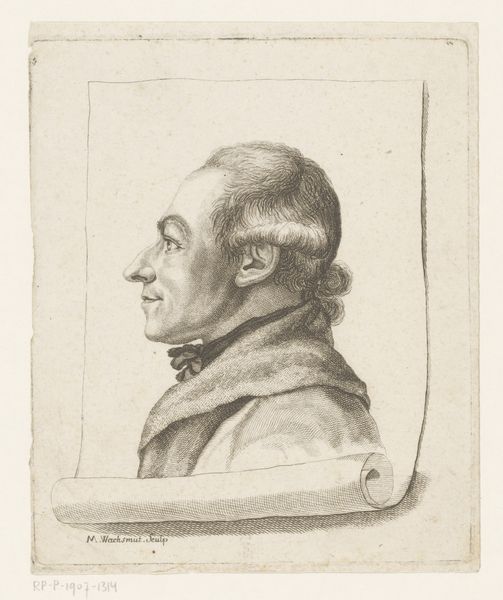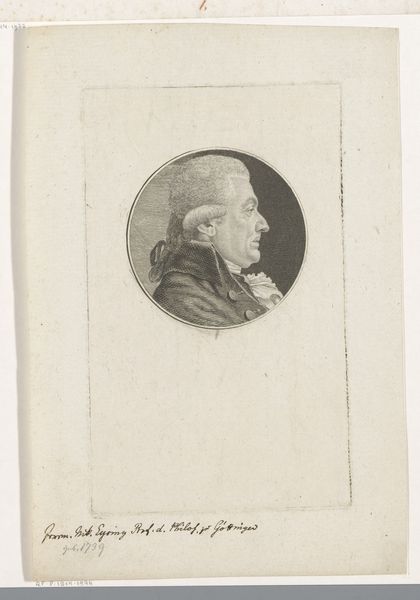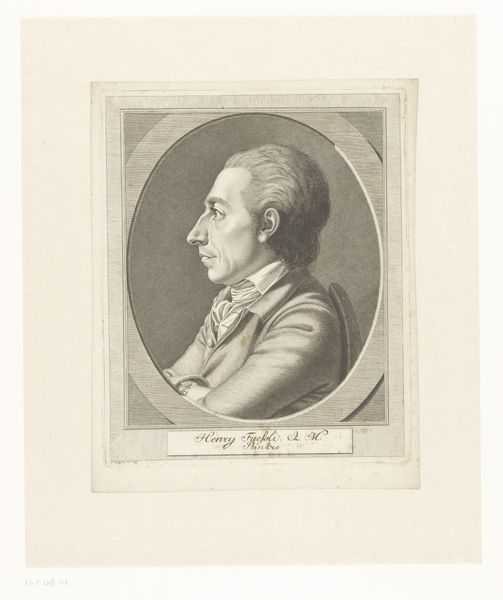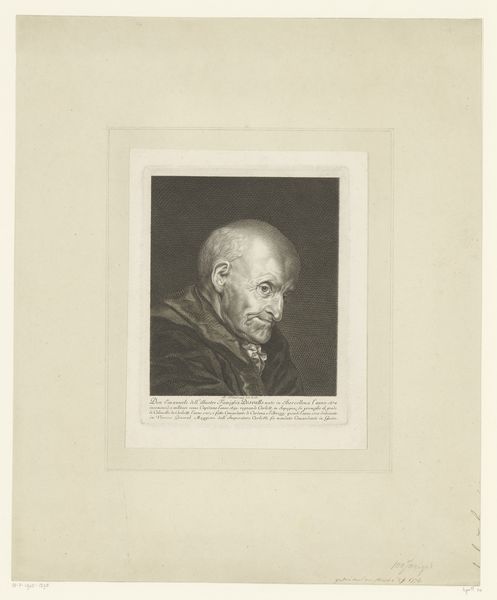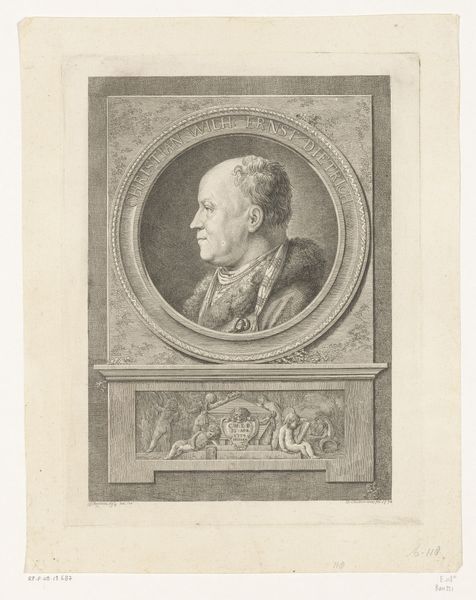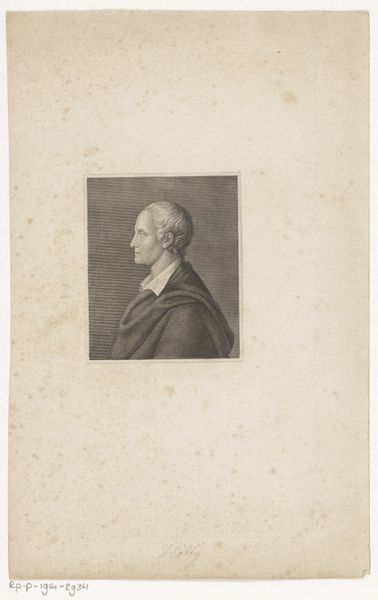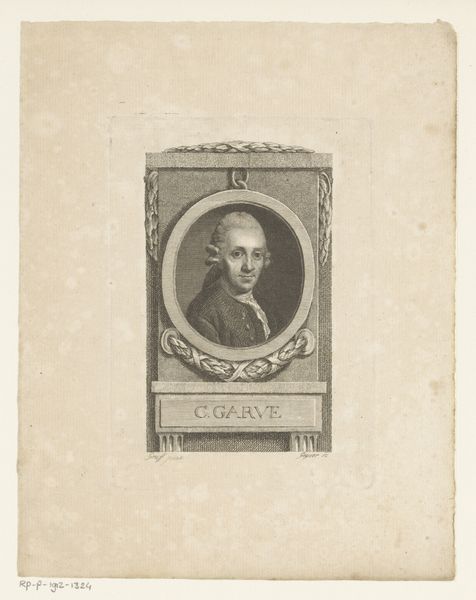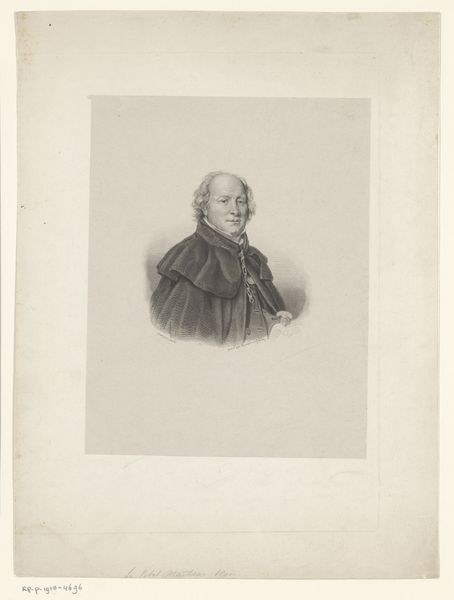
drawing, print, engraving
#
portrait
#
drawing
#
neoclacissism
# print
#
engraving
Dimensions: height 67 mm, width 80 mm
Copyright: Rijks Museum: Open Domain
Curator: Here we have an engraving, "Portret van Christoph Martin Wieland" by Ernst Ludwig Riepenhausen, likely produced between 1775 and 1840. Editor: My first impression is that this piece evokes a certain austere elegance. The sharp lines and stark contrast suggest a world governed by reason and order, wouldn’t you agree? Curator: Absolutely. The engraving medium itself speaks to a specific socio-economic context, requiring specialized tools, skills, and a printmaking workshop. We have to consider the material labor involved in producing images like these. Editor: And who Christoph Martin Wieland was. He was a prominent intellectual figure. Portraits like these were powerful tools of image-making, establishing public personas and solidifying reputations. They circulated widely through printed media. This very image reinforces the intellectual status of its sitter through established conventions. Curator: Precisely! We can think of paper as a relatively affordable medium that allowed the artwork's reproduction. Its physical characteristics dictated size and the detail of the artwork, and, ultimately, democratized this individual’s image to wider society. Editor: That's right, it’s a form of visual dissemination, giving Wieland a degree of immortality, or at least visibility within specific intellectual circles of that era. This image actively engaged in creating and upholding his intellectual legacy. Curator: Also the engraving technique—those carefully etched lines, made of small marks—all point to an intricate labor. The material choices were integral to constructing Wieland's projected image. Editor: I suppose that engravings like this also played an interesting social function in the salons and academic circles of the time, almost like a printed social media account that reinforced intellectual networks. Curator: Looking at it from the materials point of view really changes my perceptions of it; moving it away from a ‘historical likeness’ and into the politics of art production, consumption, and circulation. Editor: Well, on the other hand, considering how this engraving circulated and what social effect it had provides some nice new lenses on this piece. It has really broadened my understanding.
Comments
No comments
Be the first to comment and join the conversation on the ultimate creative platform.

